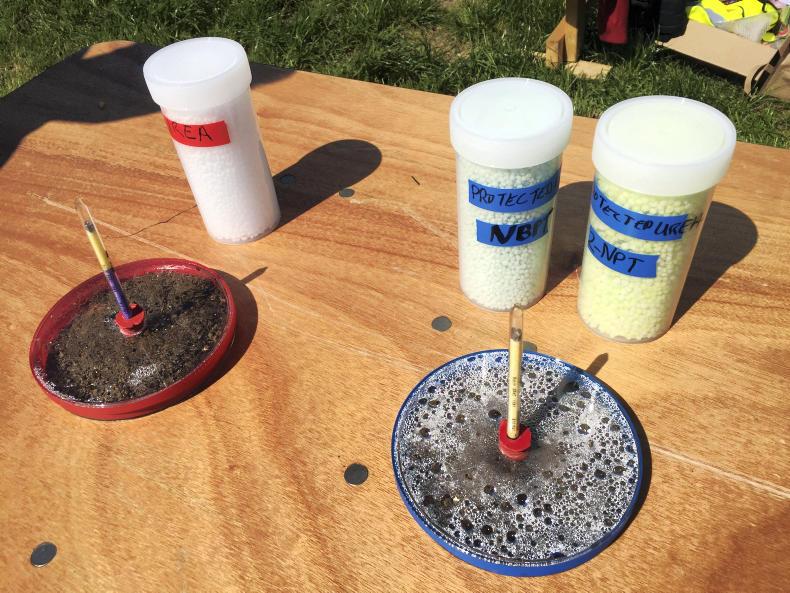Protected urea
Nitrous oxide released by CAN fertiliser is one of the strongest greenhouse gases on Earth, and switching to urea reduces these emissions by 71%, said Patrick Forrestal. But urea emits another nitrogen-based pollutant: ammonia, which can in turn be cut by 79% with chemical treatments, protecting it against urease enzymes.
Protected urea in a nutshell: Patrick Forrestal’s explanation at the @Teagasc #dairybeef open day today. @farmersjournal pic.twitter.com/MmKbvnaxYj
— Thomas Hubert ?? (@tom_hubert) May 21, 2019
Forrestal showed test plates with regular and protect urea 48 hours after spreading: an ammonia gauge had changed colour half way up its length on the regular plate, while no colour change was visible on the protected urea plate.
Forrestal said March fertiliser prices were €1.05/kg N for CAN, 95c/kg N for protected urea and 80c/kg N for regular urea. After six years comparing the fertilisers on various application programmes, he added that protected urea worked out €6/ha to €17/ha cheaper than CAN.
Teagasc has been testing ryegrass alongside timothy, white clover, red clover, plantain and chicory on their own and in various combinations.
“The six-species mix receiving 150kgN/ha outyields ryegrass monoculture at 300kgN/ha,” said Guylain Grange.

Not only do multi-species swards grow around 3tDM/ha extra compared to grass, they also give a more constant yield as conditions change, favouring one plant or another – for example during a drought.
Clover is most effective at fixing nitrogen, with benefits achieved from 30% of the sward.
Meanwhile, herbs such as plantain and chicory appear to deliver “considerable reductions in nitrous oxide emissions” from the soil, according to ongoing research by Saoirse Cummins. Teagasc is now starting grazing trials on the swards.






 This is a subscriber-only article
This is a subscriber-only article










SHARING OPTIONS: